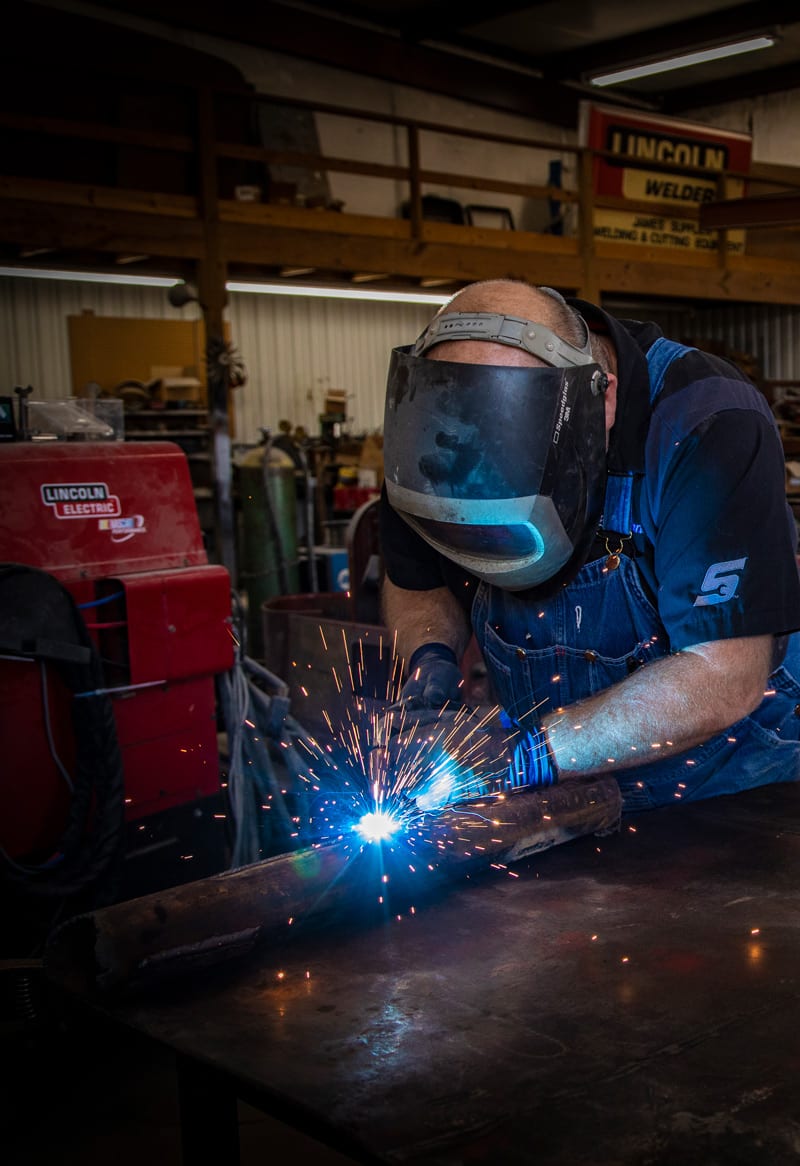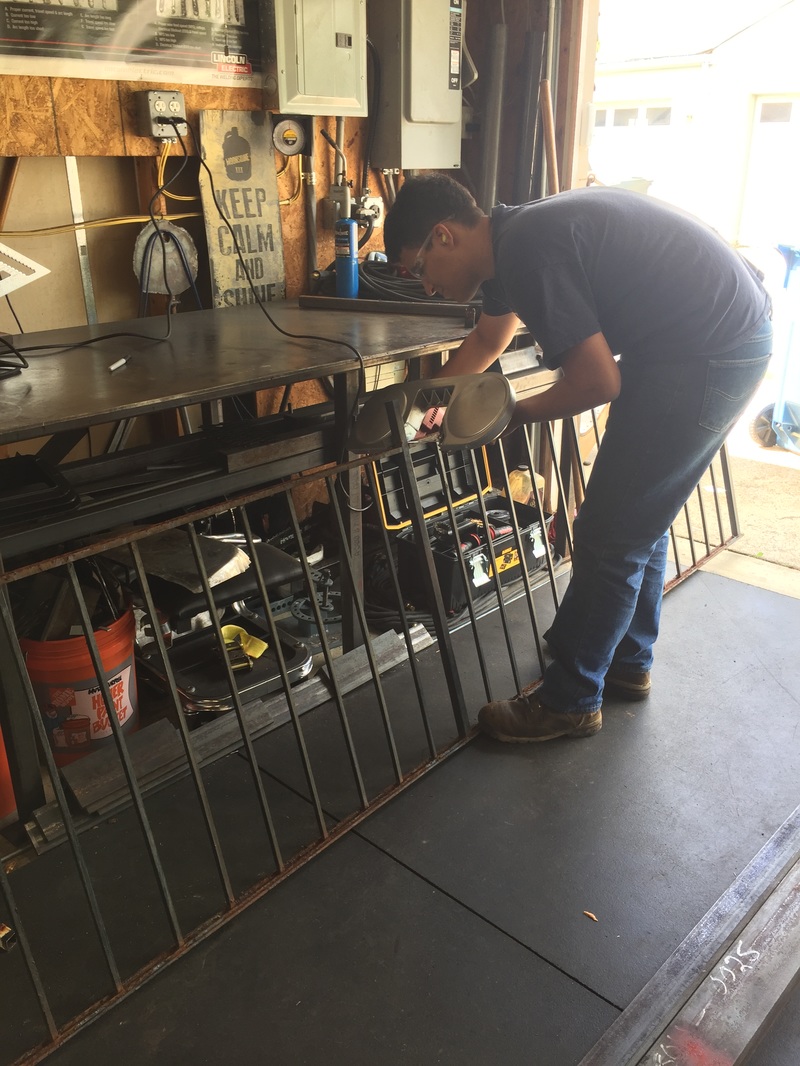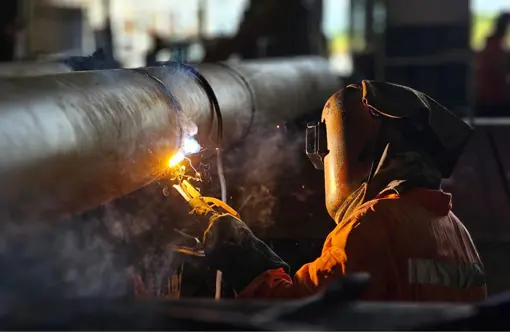Typical Welding Repair Work Issues and Exactly How to Address Them Successfully
Welding fixings commonly encounter an array of concerns that can endanger the stability of the end product. Usual issues include poor infiltration, porosity, and imbalance, amongst others. Each flaw presents one-of-a-kind obstacles that require details techniques for resolution. Recognizing these issues is vital for welders aiming to improve their end results and abilities. This discussion will check out these typical welding repair work concerns and efficient techniques to address them.
Insufficient Infiltration
Poor penetration occurs when the weld metal stops working to fully fuse with the base product, resulting in weak joints and potential architectural failings. This problem usually originates from not enough heat input, incorrect electrode angle, or inappropriate welding rate. Welders might come across insufficient infiltration due to a miscalculation of the needed criteria for a details material density or type. Additionally, contamination on the base product's surface area can prevent effective bonding, aggravating the trouble. To deal with inadequate penetration, welders need to ensure suitable setups on their equipment and maintain a clean work surface. Regular assessment of welds is suggested to identify any type of deficiencies early, permitting timely adjustments and the avoidance of jeopardized structural honesty in bonded assemblies.
Porosity
Porosity is a common problem in welded joints that shows up as little gas bubbles entraped within the weld steel. This defect can endanger the honesty of the weld, resulting in minimized stamina and prospective failure under stress. Montana Mobile Welding and Repair Belgrade Welding. Porosity normally arises from contamination, moisture, or improper welding strategies, which allow gases to get away right into the molten weld swimming pool. To deal with porosity, welders should guarantee correct surface prep work, preserve a tidy workplace, and use suitable welding parameters. Furthermore, selecting the ideal filler product and protecting gas can minimize gas entrapment. Regular examination and testing of welds can assist identify porosity early, assuring timely corrective activities are taken, thereby preserving the top quality and dependability of the bonded framework
Imbalance
Imbalance in welding can develop from different factors, consisting of improper arrangement and thermal growth. Comprehending the root creates is necessary for efficient resolution. Numerous correction strategies are available to straighten elements and ensure architectural honesty.
Reasons of Imbalance
Welding misalignment typically originates from a range of underlying issues that can endanger architectural integrity. One main cause is improper fit-up of parts before welding, which can bring about voids and irregular surface areas. Variations in thermal development during the welding procedure can likewise lead to distortion, particularly if the products being joined have different coefficients of development. Furthermore, insufficient securing and fixturing may stop working to hold elements safely in position, resulting in activity throughout welding. Improperly maintained devices, including welding makers and tools, may introduce variances in the weld bead, additional adding to misalignment. Driver mistake, stemming from not enough training or experience, can likewise play a considerable function in developing misaligned welds.

Modification Methods Available
Addressing imbalance successfully calls for a combination of restorative methods customized to the details issues available. One common technique is using jigs or fixtures to hold parts in the appropriate position throughout welding, guaranteeing regular positioning. Additionally, pre-heating the materials can help in reducing distortion and improve fit-up. For substantial imbalance, mechanical adjustment techniques, such as utilizing hydraulic jacks or clamps, can be utilized to correct the placement before welding. Post-weld heat therapy may likewise be essential to alleviate anxieties brought on by misalignment. Finally, mindful inspection and change throughout the setup phase can protect against imbalance concerns from becoming substantial problems, advertising a smoother welding procedure and improving total structural integrity.
Distortion
Distortion is a typical challenge in welding that can arise from different factors, including uneven home heating and cooling. Understanding the root causes of distortion is vital for carrying out efficient avoidance strategies. Addressing this concern not only boosts architectural integrity yet likewise boosts the overall quality of the weld.
Sources of Distortion
When based on the intense heat of welding, materials frequently go through modifications that can lead to distortion. This phenomenon mainly develops from thermal growth and tightening throughout the welding procedure. As the weld area warms up, the material increases; upon air conditioning, it contracts, which can develop inner anxieties. Additionally, uneven home heating across a workpiece can aggravate these anxieties, leading to bending or bending. The kind of material also plays a considerable function; steels with varying thermal conductivity and coefficients of expansion might respond in a different way, causing unpredictable distortions. Inadequate joint layout and poor fixturing can add to imbalance throughout welding, raising the chance of distortion. Comprehending these causes is necessary for effective welding fixing and avoidance approaches.
Prevention Techniques
Effective avoidance techniques for distortion throughout welding concentrate on managing warmth input and making certain correct joint layout. Maintaining a regular heat input aids to decrease thermal development and contraction, which can bring about distortion. Making use of strategies such as preheating the work surface can also decrease the temperature gradient, promoting uniform home heating. In addition, selecting ideal joint styles, such as T-joints or lap joints, can improve stability and reduce stress and anxiety concentrations. Executing proper fixturing to secure the workpieces in location additionally aids in preserving positioning during the welding process. Finally, staggered welding series can distribute warm more evenly, stopping local distortion. By applying these techniques, welders can considerably lower the probability of distortion and improve the total top quality of their welds.
Cracking
Breaking is an usual concern encountered in welding repair work, frequently resulting from various aspects such as improper cooling rates, product choice, or insufficient joint prep work. The occurrence of cracks can significantly endanger the honesty of the weld, bring about prospective i loved this failings during operation. To address this issue, welders need to initially assess the root creates, making sure that materials work and suitably picked for the details application. In addition, regulating the air conditioning price during the welding procedure is essential; rapid air conditioning can cause stress and anxiety and lead to fracturing. Correct joint design and prep work additionally add to minimizing the threat. Carrying out these methods can boost weld high quality and longevity, eventually decreasing the chance of breaking in finished weldments.

Insufficient Fusion
A substantial concern in welding repair services is incomplete fusion, which takes place when the weld metal does not sufficiently bond with the base product or previous weld passes - Montana Mobile Welding and Repair Belgrade Welding. This problem can bring about weak points in the joint, potentially jeopardizing the stability of the welded structure. Elements adding to incomplete blend include inadequate warm input, inappropriate welding strategy, and contamination of the surface areas being signed up with. To address this problem successfully, welders should ensure proper pre-weld cleansing and surface prep work, along with change their welding parameters to achieve sufficient penetration and fusion. Routine inspection throughout the welding procedure can also aid identify incomplete combination early, permitting prompt corrective measures to enhance the general high quality of the weld
Overheating
While welding repair services can boost architectural integrity, overheating presents a significant obstacle that can cause material degradation. Too much warm throughout welding can change the mechanical homes of steels, leading to lowered welding iron stamina, boosted brittleness, and warping. This sensation is particularly vital in high-stress applications where architectural integrity is critical. Recognizing getting too hot can involve aesthetic assessments for discoloration or distortion, along with keeping track of temperature level throughout the welding process. To reduce the dangers related to getting too hot, welders need to employ appropriate strategies, such as managing heat input, readjusting traveling speed, and making use of suitable filler materials. Furthermore, implementing pre- and post-weld heat therapies can assist bring back product properties and boost the general quality of the repair work, making sure long-lasting performance and security.
Regularly Asked Concerns
What Are the Typical Indications of a Welding Issue?

Just How Can I Evaluate My Welds for High quality?
To check welds for high quality, one can utilize aesthetic inspections, ultrasonic screening, and radiographic techniques. Each technique assures architectural stability, identifies flaws, and validates adherence to defined requirements, inevitably boosting the integrity of the bonded joints.
What Safety and security Safety Measures Should I Take While Welding?
When welding, one ought to prioritize safety and security by wearing appropriate personal safety tools, making sure proper air flow, securing flammable products away, preserving a tidy work space, and being aware of environments to stop injuries and accidents.
Can I Repair a Weld Without Renovating the Entire Joint?
Repairing a weld without redesigning the entire joint is feasible, depending upon the damage (Montana Mobile Welding and Repair). Methods such as grinding, adding filler material, or utilizing a Recommended Site welding process can effectively resolve particular defects while preserving the bordering framework
What Equipment Are Crucial for Efficient Welding Repairs?
Vital devices for efficient welding fixings consist of a welding device, cable brush, mill, safety equipment, clamps, and filler materials. Each device plays an essential role in making sure top quality and safety during the repair service procedure. Porosity normally develops from contamination, wetness, or inappropriate welding techniques, which permit gases to leave into the molten weld swimming pool. Improperly kept devices, including welding equipments and tools, might present disparities in the weld bead, further contributing to imbalance. When subjected to the intense warm of welding, products frequently undertake changes that can lead to distortion. Cracking is a common issue experienced in welding repair work, frequently resulting from various factors such as improper cooling rates, product option, or insufficient joint preparation. A considerable issue in welding repair services is insufficient fusion, which occurs when the weld steel does not effectively bond with the base product or previous weld passes.